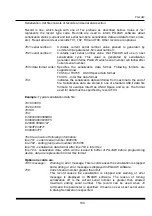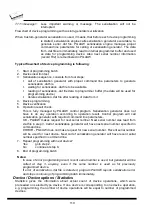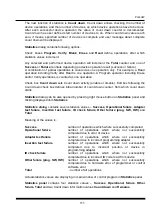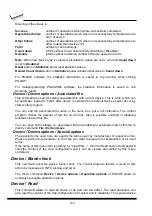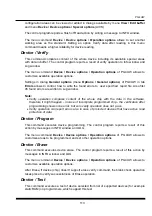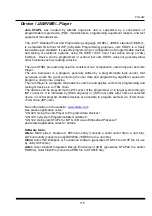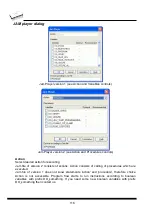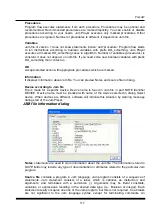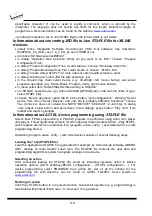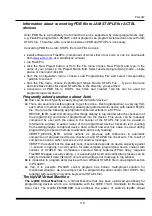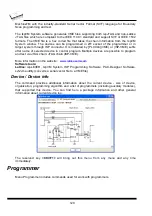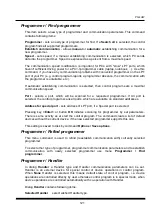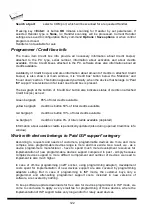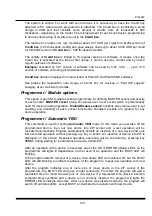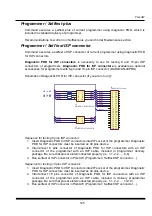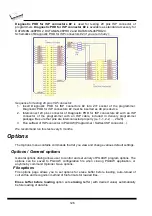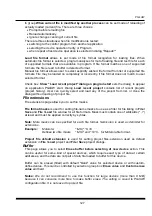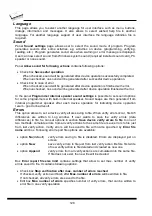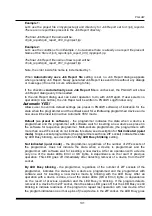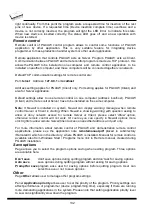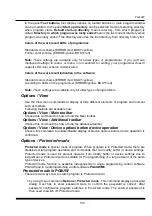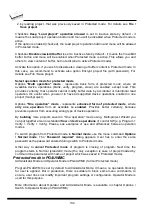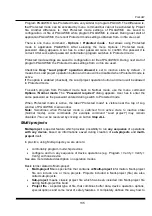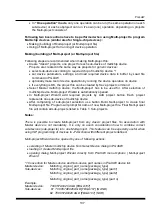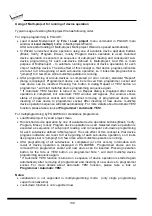
PG4UW
123
The system is simple. For work with such devices it is necessary to have the Credit box
attached to PC where device programmer is attached. The Credit box is technically a small
dongle in USB port that contains some amount of credits, from 25 thousands to 500
thousands - depending on the model. The micropayment for each such device programming
is done by decreasing of credits amount in the
Credit box
.
The real fee for credit is very low, it starts at about 0.01 USD per credit for CB-25k version of
Credit box
(= 25 thousands credits) and goes steeply down up to about 0.003 USD per credit
for CB-500k version of
Credit box
(= 500 thousands credits).
The validity of
Credit box
is limited to 10 regular versions of software. It means, once the
Credit box is activated at the time of first usage, it can be used by current and by next 9
regular versions of software.
Example:
activated by 3.01 version of software can be used by 3.01, 3.02, ..., up to 3.10
version of software (including all OnDemand versions).
Credit box
status is displayed in main window of PG4UW and PG4UWMC software.
See please the Application note Usage of Credit box for devices in 'Paid ISP support'
category at our web site for details.
Programmer / Module options
This option is used for multiple socket programmers for defining MASTER socket and activity
of each socket.
MASTER socket
group box allows user to set socket which is preferentially
used for device reading operation.
Enable/Disable socket
checkbox array allows user to set
enabling and disabling of each socket individually. Disabled sockets are ignored for any
device operation.
Programmer / Automatic YES!
This command is used for setting
Automatic YES!
mode. In this mode you just take off the
programmed device, then put new device into ZIF socket and a last operation will be
repeated automatically. Program automatically detects an insertion of a new device and runs
last executed operation without pressing any key or button. An insertion of device into ZIF is
displayed on the screen. Repeated operation executing will be cancelled by pressing key
<ESC>
during waiting for insert/remove a device to/from ZIF.
After an operation with a device is executed, one of the OK or ERROR (status) LEDs on the
programmer will lights in dependence on the result of an operation and the BUSY LED will
blinking.
If the program detects removal of a device, then status LED will switched off, but the BUSY
LED will still blinking to indicate readiness of the program to repeat last operation with new
device.
After the program indicates one or more pins of (new) device in the ZIF socket of the
programmer, the BUSY LED will goes to light continually. From this the program will wait a
requested time for insert the rest pins of new device. If a requested time (Device insertion
complete time) overflows and a device is not correctly inserted, the program will lights the
ERROR LED to indicate this state. After new device was inserted correctly, the program will
switch off all status LEDs, except BUSY, and will start an operation with new device.
Summary of Contents for Dataman-40Pro
Page 7: ...Quick Start 7 Introduction ...
Page 12: ...12 Quick Start ...
Page 15: ...Detailed description 15 Detailed description ...
Page 16: ...16 DATAMAN 448PRO2 ...
Page 30: ...30 DATAMAN 48PRO2 DATAMAN 48PRO2C ...
Page 45: ...DATAMAN 40PRO 45 DATAMAN 40PRO ...
Page 54: ...54 DATAMAN MEMPRO ...
Page 61: ...Setup 61 Setup ...
Page 72: ...72 PG4UW ...
Page 141: ...PG4UWMC 141 PG4UWMC ...
Page 154: ...154 Installation procedure customized ...
Page 159: ...Common notes 159 Common notes ...
Page 171: ...Troubleshooting and warranty 171 Troubleshooting and warranty ...

